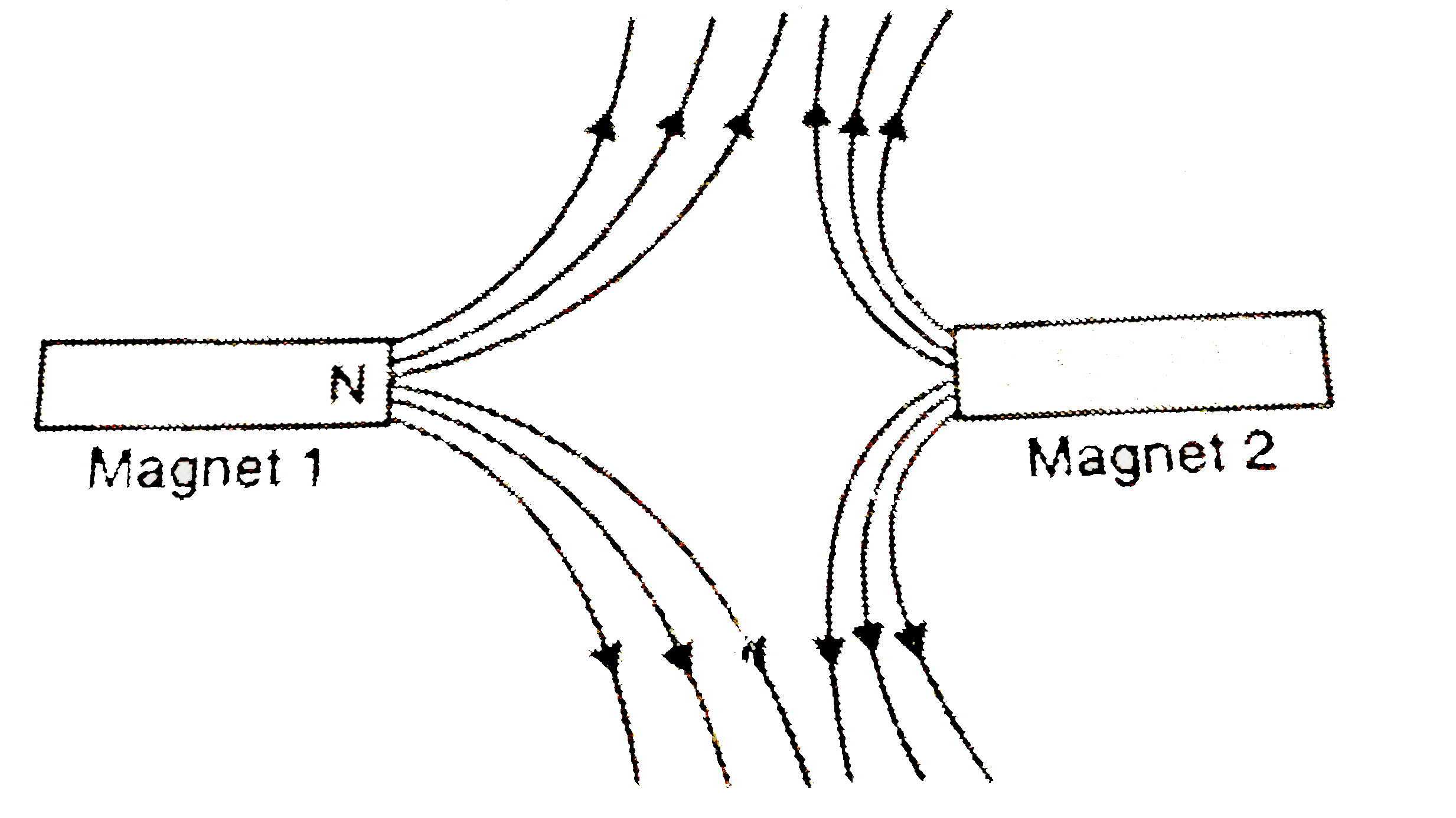Choose the correct statement related to magnet:
(i) In magnet there are always two magnetic poles
(ii) There is a mutual attraction between like poles
(iii) A magnet which is independentily hanged, always stops in geopraphically north-south direction.
(iv) If any magnet is cut down in many pieces then every piece will react as a complete magnet
(i), (ii) and (iii)
(ii), (iii) and (iv)
(i), (iii) and (iv)
(i), (ii) and (iv)
The correct Answer is:C
To solve the question, we need to evaluate each statement related to magnets and determine which ones are correct.
1. Evaluate Statement (i): "In magnet there are always two magnetic poles."
- A magnet, by definition, has two poles: a north pole and a south pole. This statement is correct.
2. Evaluate Statement (ii): "There is a mutual attraction between like poles."
- Like poles (north-north or south-south) repel each other, while opposite poles (north-south) attract each other. Therefore, this statement is incorrect.
3. Evaluate Statement (iii): "A magnet which is independently hanged, always stops in geographically north-south direction."
- A freely suspended magnet aligns itself in the north-south direction due to the Earth's magnetic field. This statement is correct.
4. Evaluate Statement (iv): "If any magnet is cut down in many pieces then every piece will react as a complete magnet."
- When a magnet is cut, each piece will have its own north and south pole, effectively making each piece a smaller magnet. This statement is correct.
Conclusion:
The correct statements are:
- (i) In magnet there are always two magnetic poles. (Correct)
- (ii) There is a mutual attraction between like poles. (Incorrect)
- (iii) A magnet which is independently hanged, always stops in geographically north-south direction. (Correct)
- (iv) If any magnet is cut down in many pieces then every piece will react as a complete magnet. (Correct)
Thus, the correct answer is C: Statements (i), (iii), and (iv) are correct.
- A magnet, by definition, has two poles: a north pole and a south pole. This statement is correct.
- Like poles (north-north or south-south) repel each other, while opposite poles (north-south) attract each other. Therefore, this statement is incorrect.
- A freely suspended magnet aligns itself in the north-south direction due to the Earth's magnetic field. This statement is correct.
- When a magnet is cut, each piece will have its own north and south pole, effectively making each piece a smaller magnet. This statement is correct.
The correct statements are:
- (i) In magnet there are always two magnetic poles. (Correct)
- (ii) There is a mutual attraction between like poles. (Incorrect)
- (iii) A magnet which is independently hanged, always stops in geographically north-south direction. (Correct)
- (iv) If any magnet is cut down in many pieces then every piece will react as a complete magnet. (Correct)
Topper's Solved these Questions
- CHEMICAL EFFECTS OF ELECTRIC CURRENT AND ELECTROPLATING BOOK - AGRAWAL EXAM CART BIHARCHAPTER - CHEMICAL EFFECTS OF ELECTRIC CURRENT AND ELECTROPLATING EXERCISE - Important Question
65 Videos
- CHEMICAL EFFECTS OF ELECTRIC CURRENT AND ELECTROPLATING BOOK - AGRAWAL EXAM CART BIHARCHAPTER - CHEMICAL EFFECTS OF ELECTRIC CURRENT AND ELECTROPLATING EXERCISE - Important Question
65 Videos
- FORCES AND ITS TYPES (FRICTIONAL FORCE, GRAVITATIONAL FORCE, THRUST AND PRESSURE)BOOK - AGRAWAL EXAM CART BIHARCHAPTER - FORCES AND ITS TYPES (FRICTIONAL FORCE, GRAVITATIONAL FORCE, THRUST AND PRESSURE)EXERCISE - Important Questions
48 Videos
Similar Questions
Statement-A: The points of the magnet where there is maximum attraction are called the poles of the magnet
Statement-B : Magnetic poles always exist in pairs
View Solution(a) Define magnetic field lines. Describe an activity to draw a magnetic field line outside a bar magnet from one pole to another pole.
(b) Explain why, a freely suspended magnet always points in the north-south direction.
View Solution
Knowledge Check
If you break a magnet into 6 pieces, how many north and how many south poles would there be in all?
AN = 6, S = 6BN = 3, S= 3CN = 12, S = 12DN = 6, S = 12Assertion: The magnetic poles of earth do not coincide with the geographic poles.
Reason: The discrepancy between orientation of a compass and true north-south direction is known as magnetic declination.AAssertion is True, Reason is True, Reason is a correct explanation for Assertion.BAssertion is True, Reason is True, Reason is not a correct explanation for Assertion.CAssertion is True, Reason is False.DAssertion is False, Reason is False.Choose the correct statement/s:
(i) Magnetic field lines try to expand in length.
(ii) Magnetic field lines repel each other laterally.
(iii) Magnetic field lines attract each other laterally.
(iv) Magnetic field lines are crowded in region where magnetic induction has least value.AiBiiCiii,ivDiv,i
Statement-1 A freely suspended bar magnet always comes to lie in North-South direction.
Statement-2 Magnetic poles have the property of directionality
View SolutionChoose the correct word and fill in the blanks.
Like poles of magnets ______ (repel/attract)
View SolutionThe figure given below shows the magnetic field between two magnets :

(i) Copy the diagram and label the other poles of the magnets.
(ii) Which is the weaker magnet ?
View SolutionAssertion : The magnetic poles of earth do not coincide with the geographic poles.
Reason: The discrepancy between the orientation of a compass and true north-south direction is known as magnetic declination.
View SolutionState whether the following statements are true or false
Bar magnets always point towards North-South direction
View Solution
